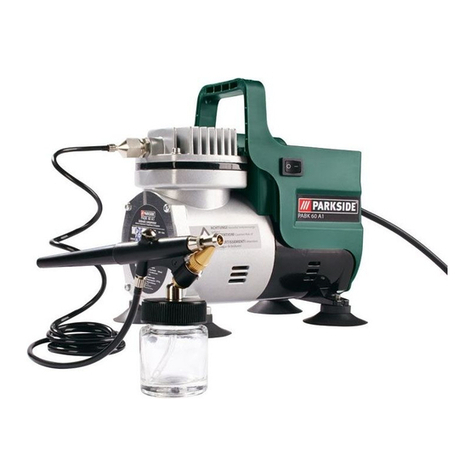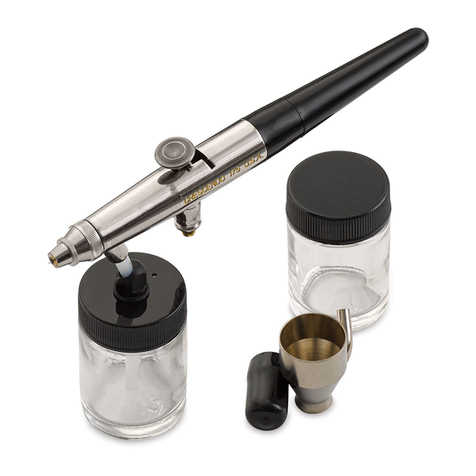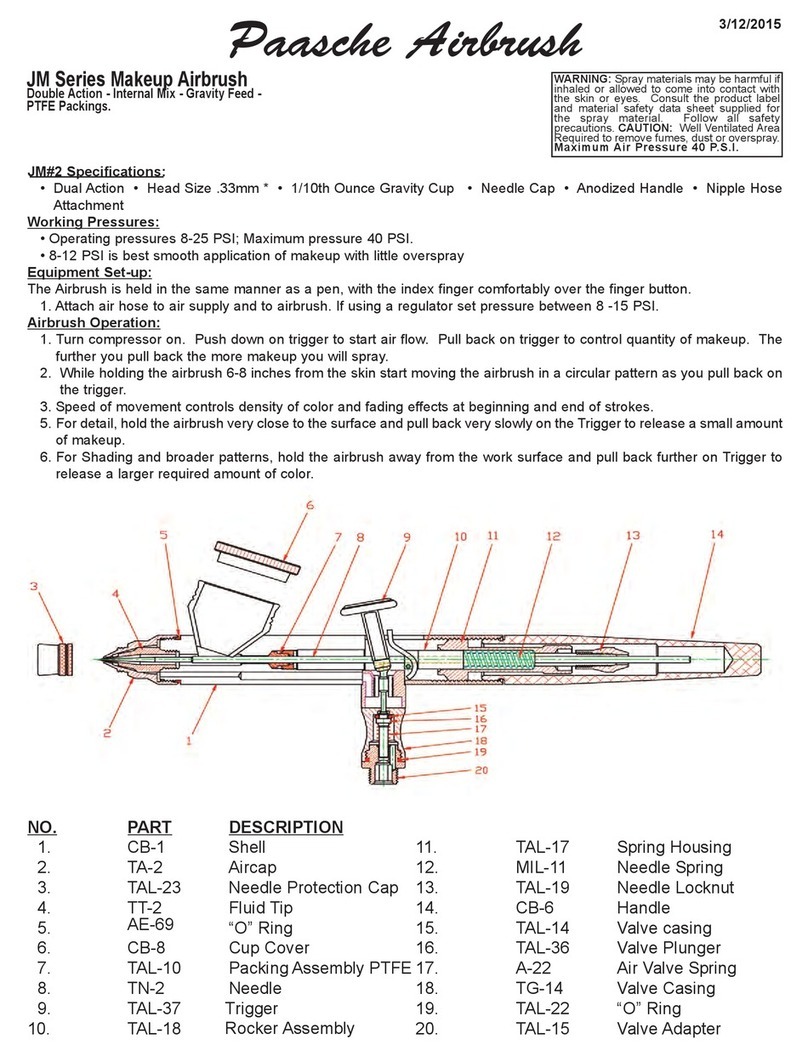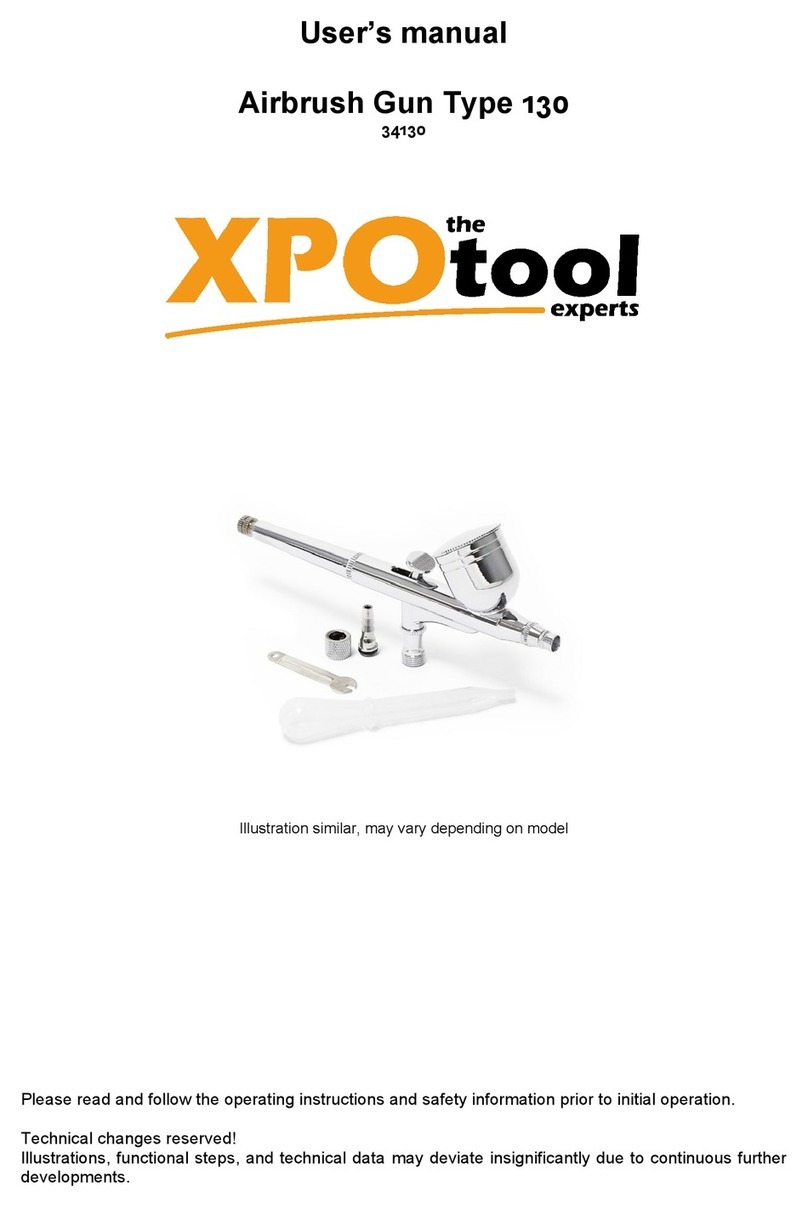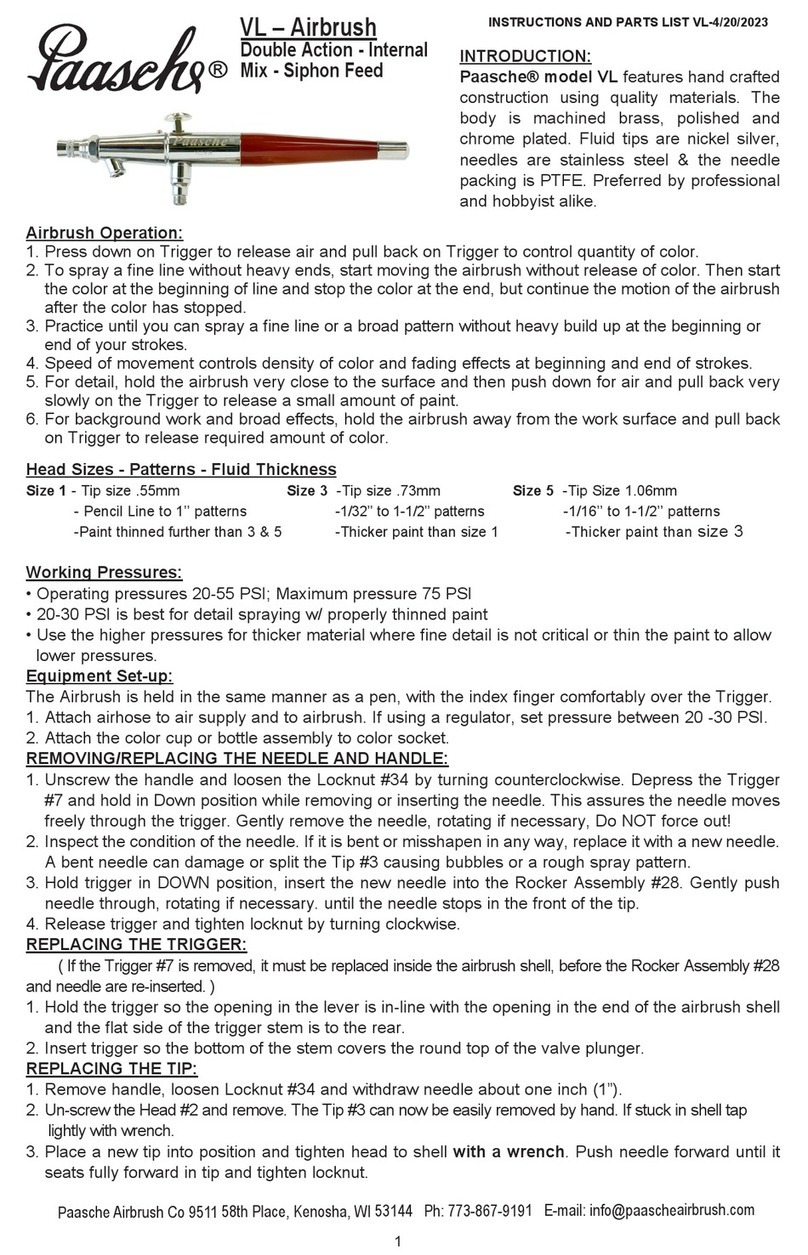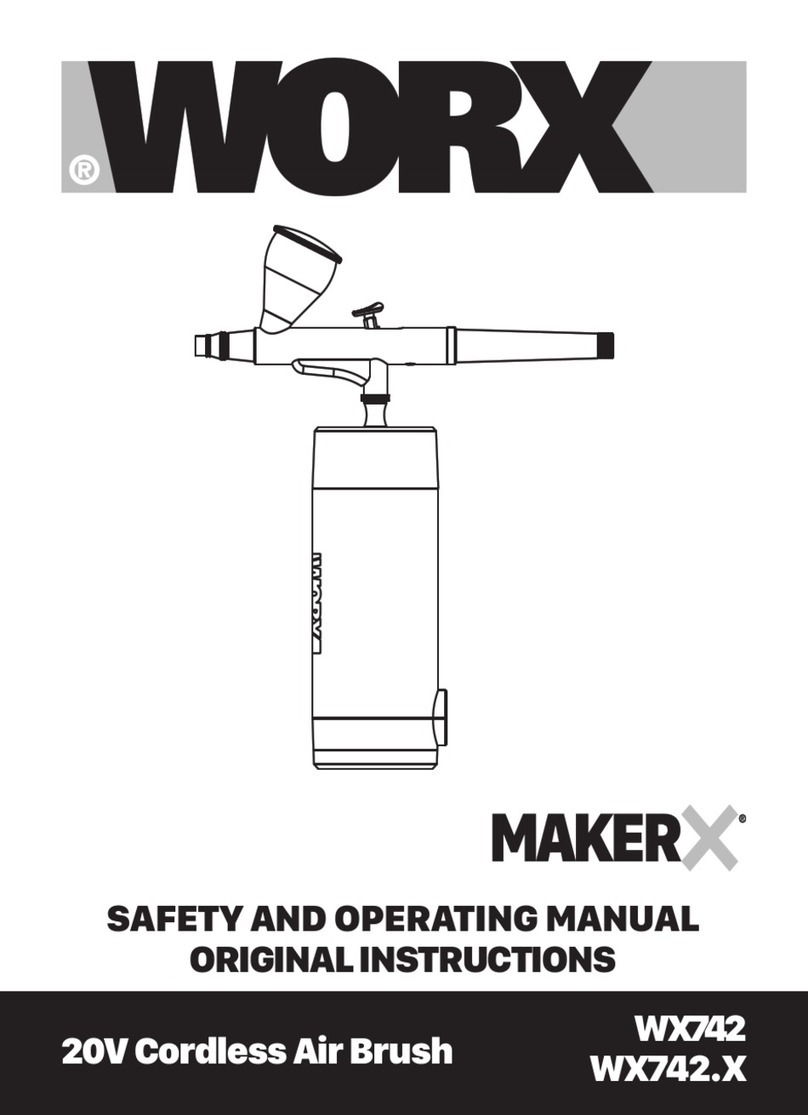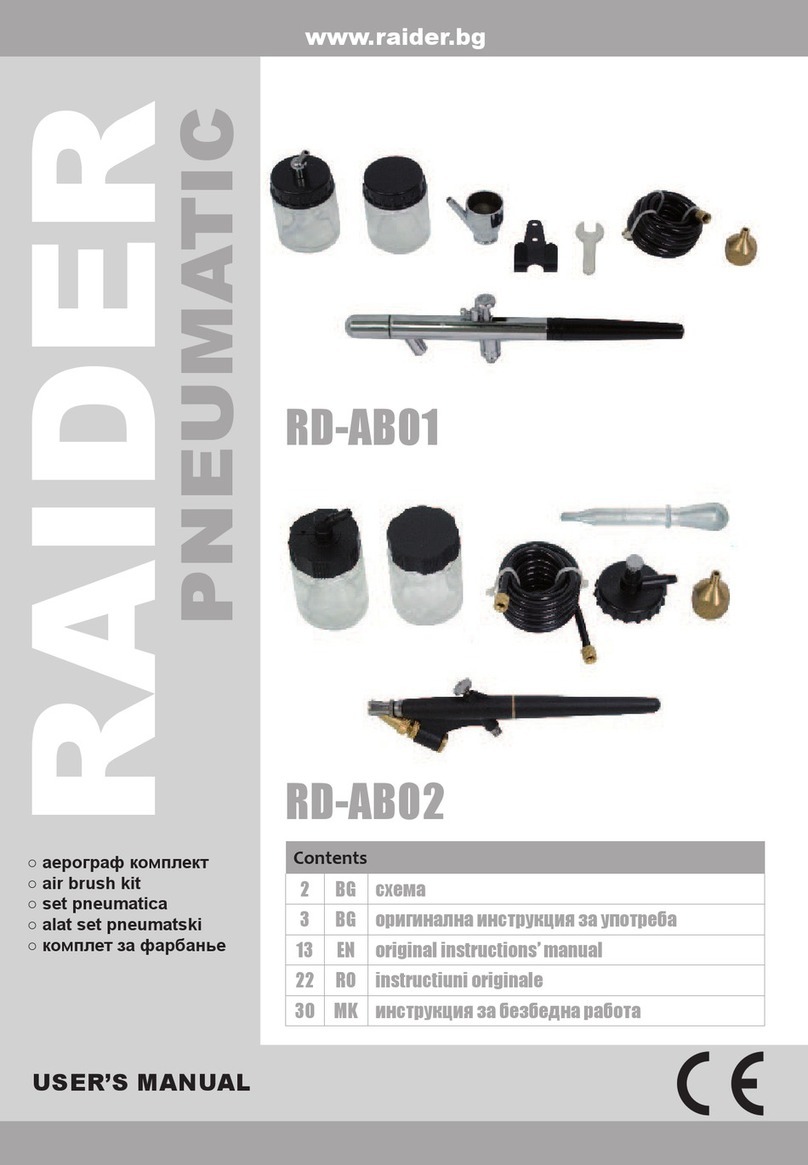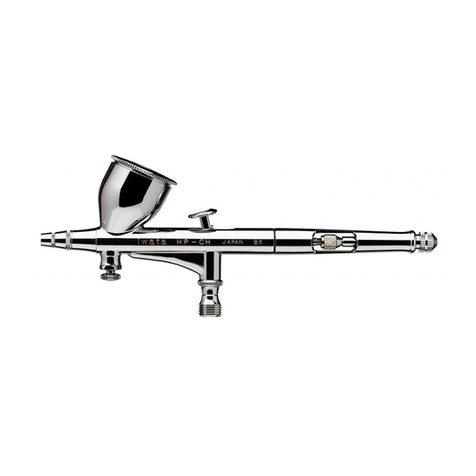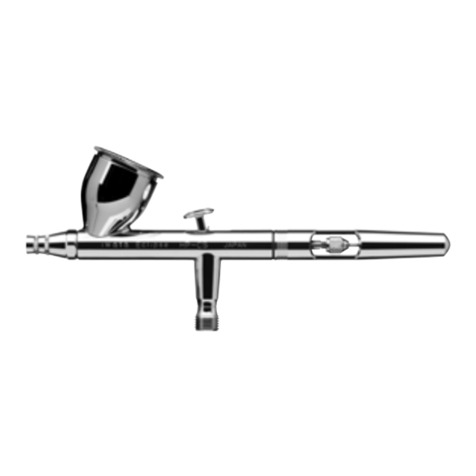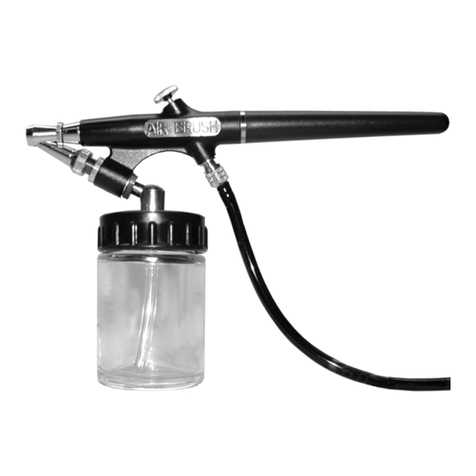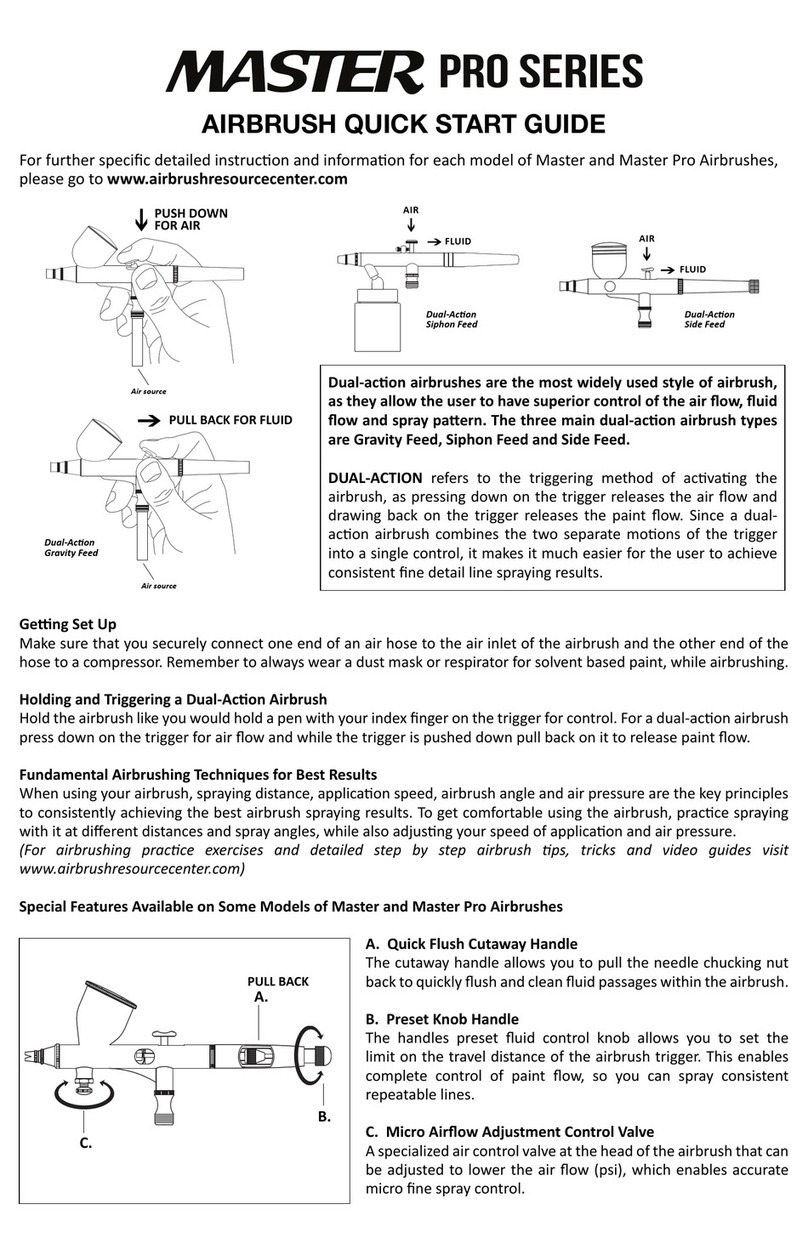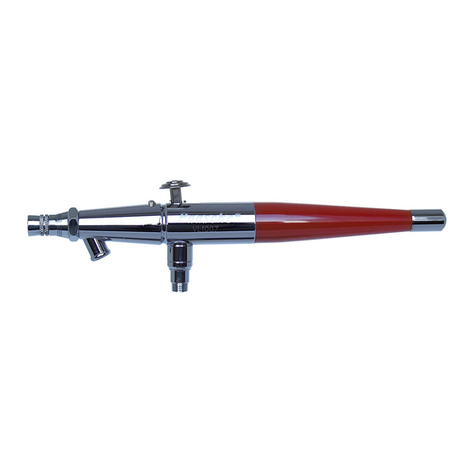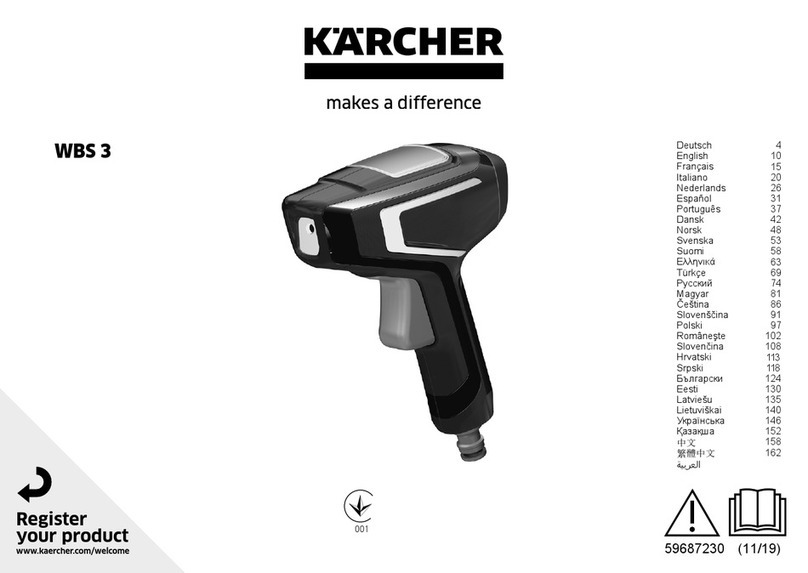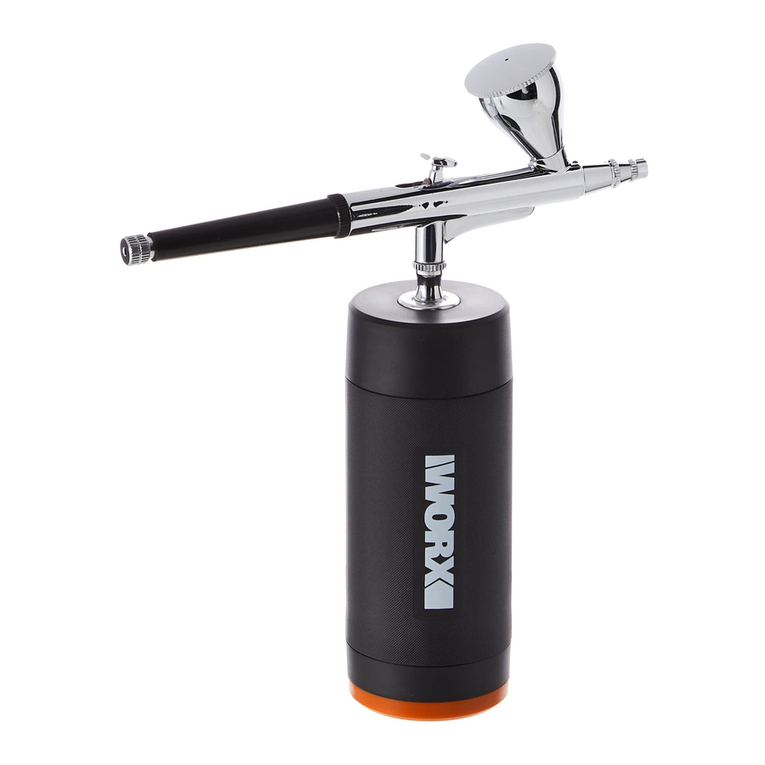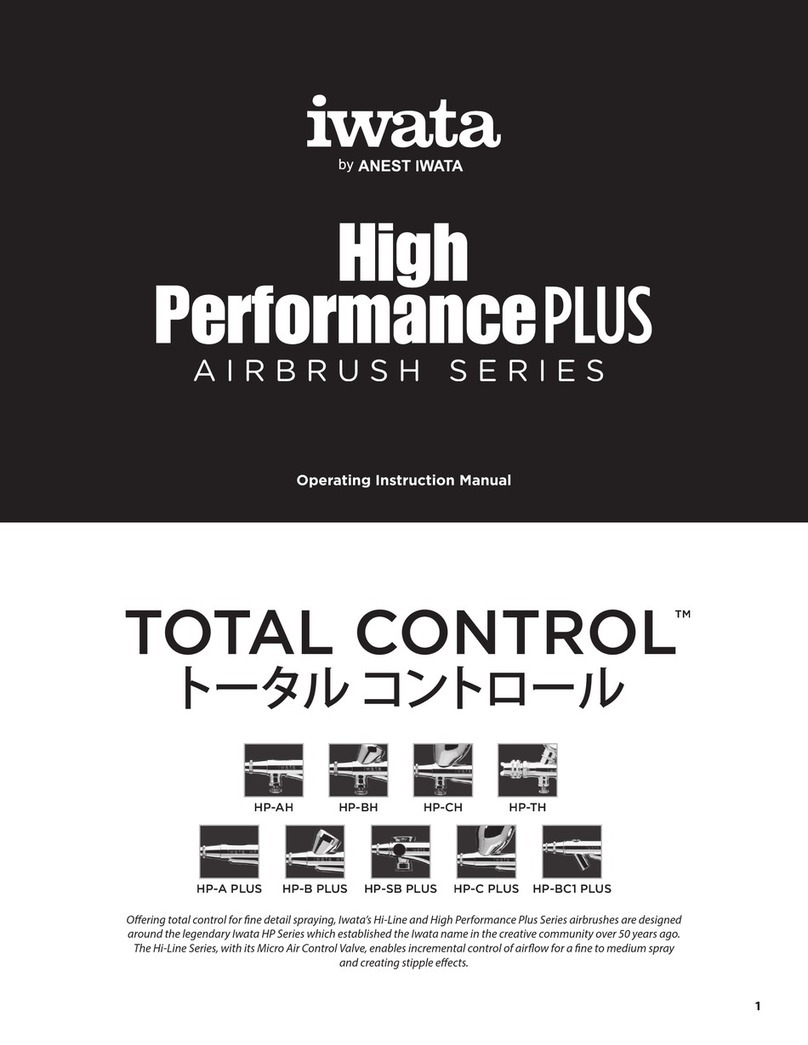
Betriebsanleitung SATAgraph 1
8. Garantiebedingungen
Für Lackierpistolen leisten wir eine Garantie von 12 Monaten, die mit dem Tage des Verkaufs an den
Endabnehmer beginnt. Die Garantie erstreckt sich auf den Materialwert von Teilen mit Fabrikations-
und Materialfehlern, die sich innerhalb der Garantiezeit herausstellen. Ausgeschlossen sind Schäden,
die durch ungeeignete oder unsachgemäße Verwendung, fehlerhafte Montage bzw. Inbetriebsetzung
durch den Käufer oder durch Dritte, natürliche Abnutzung, fehlerhafte Behandlung oder Wartung,
ungeeignete Spritzmaterialien, Austauschwerkstoffe und chemische Einflüsse wie Laugen und Säuren,
elektrochemische oder elektrische Einflüsse entstehen, sofern die Schäden nicht auf ein Verschulden
von uns zurückzuführen sind. Schmirgelnde Spritzmaterialien, wie z.B. Bleimennige, Dispersionen,
Glasuren, flüssige Schmirgel o.ä. verringern die Lebensdauer von Ventilen, Packungen, Pistole und
Düse. Hierauf zurückzuführende Verschleißerscheinungen sind durch diese Garantie nicht gedeckt.
Das Gerät ist unverzüglich nach Empfang zu kontrollieren. Offensichtliche Mängel sind innerhalb
von 14 Tagen nach Empfang des Gerätes der Lieferfirma oder uns schriftlich mitzuteilen, andernfalls
erlischt das Recht auf Garantieleistungen. Weitergehende Ansprüche jeglicher Art, insbesondere auf
Schadenersatz, sind ausgeschlossen. Das gilt auch für Schäden, die bei Beratung, Einarbeitung und
Vorführung entstehen. Wünscht der Käufer sofortige Reparatur oder Ersatz, bevor festgestellt ist, ob
von uns eine Ersatzpflicht besteht, so erfolgt die Ersatzlieferung oder Reparatur gegen Berechnung
und Bezahlung des jeweiligen Tagespreises. Stellt sich bei der Überprüfung der Mängelrüge heraus,
daß ein Garantieanspruch besteht, erhält der Käufer für die berechnete Reparatur oder Ersatzlieferung
eine Gutschrift entsprechend der Garantieleistung. Teile, für die Ersatz geliefert wurde, gehen in unser
Eigentum über. Mängelrügen oder sonstige Beanstandungen berechtigen den Käufer bzw. Auftraggeber
nicht, die Bezahlung zu verweigern oder zu verzögern. Versand des Gerätes hat an uns spesenfrei zu
erfolgen. Montagekosten (Arbeitszeit- und Fahrtkosten) sowie Fracht- und Verpackungsspesen können
wir nicht übernehmen. Hier gelten unsere Montagebedingungen. Garantieleistungen bewirken keine
Verlängerung der Garantiezeit. Die Garantie erlischt bei Fremdeingriffen.
Achtung! Bei Verwendung von Löse- und Reinigungsmitteln auf der Basis halogenisier-
ter Kohlenwasserstoffe. wie z.B. 1,1,1-Trichloräthan und Methylen-Chlorid, können an
Aluminiumbecher, Pistole sowie galvanisierten Teilen chemische Reaktionen auftreten (1,1,1-
Trichloräthan mit geringen Mengen Wasser ergibt Salzsäure). Die Teile können dadurch oxydieren,
im extremen Fall kann die Reaktion explosionsartig erfolgen. Verwenden Sie deshalb für Ihre
Farbspritzgeräte nur Löse- und Reinigunsmittel, die die obengenannten Bestandteile nicht enthal-
ten. Zur Reinigung auf keinen Fall Säure, Lauge (Basen, Abbeizer etc.) verwenden.
I.6
134742_SATAgraph1_mitCZ.indd 8 17.02.2017 10:19:06
